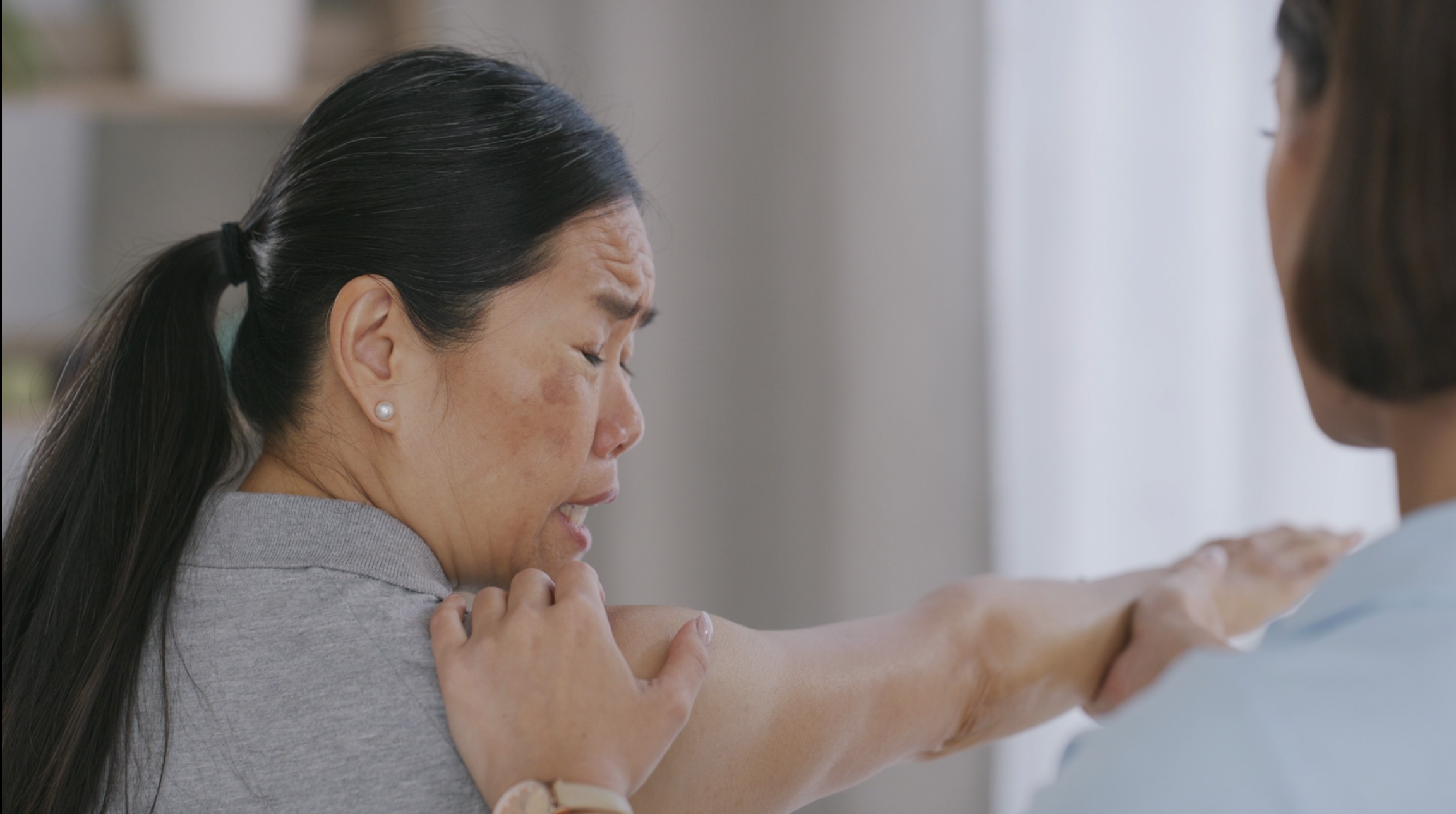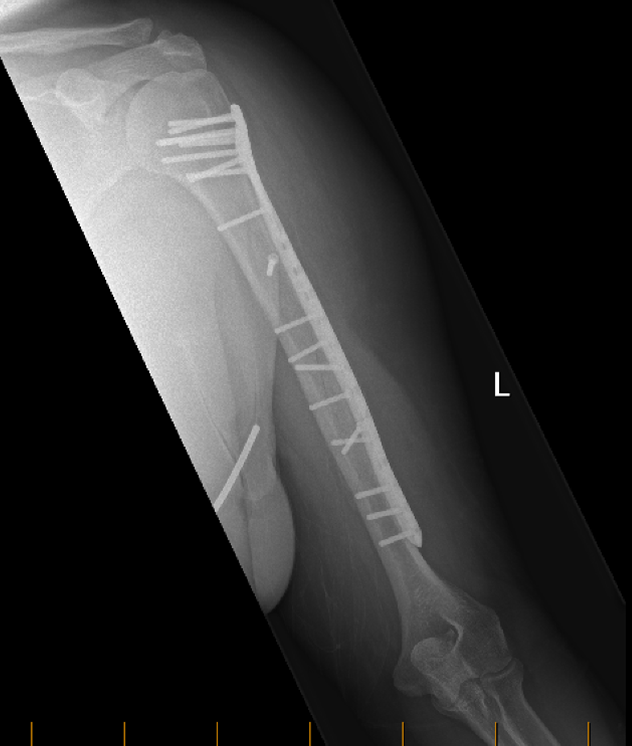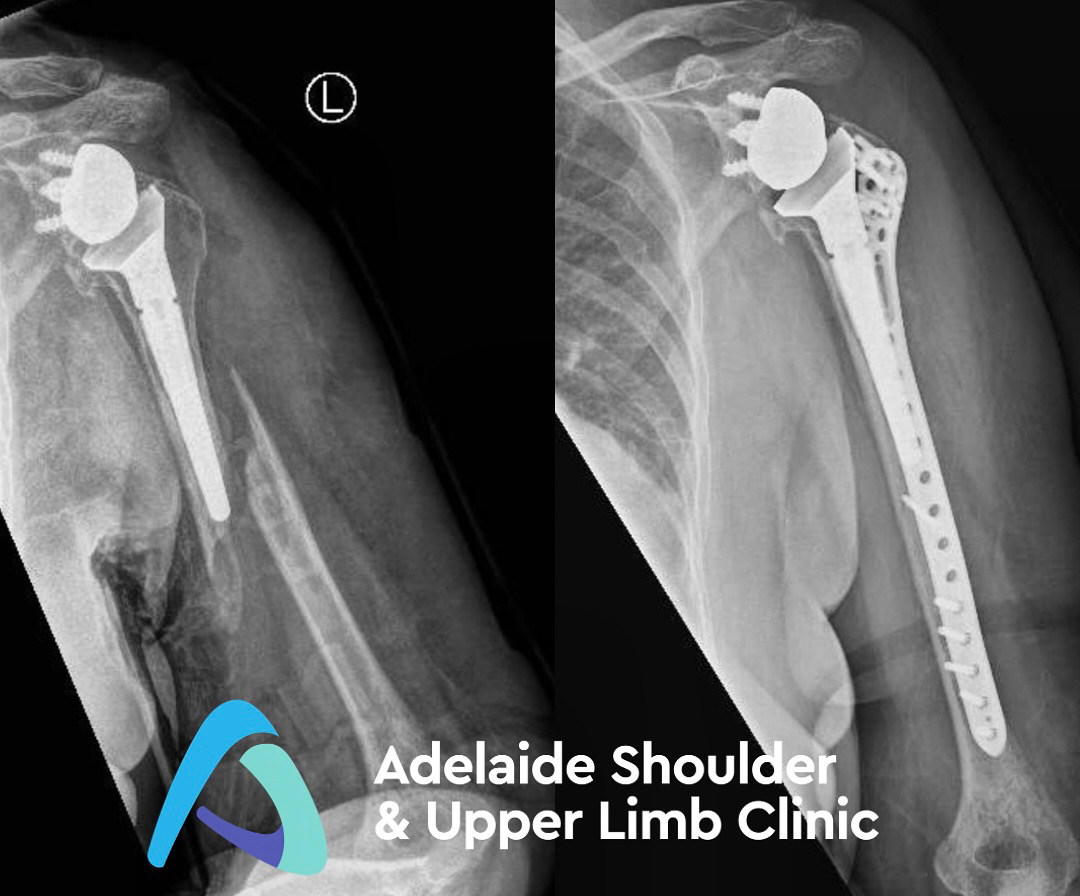Humeral Shaft Fractures
Causes, Symptoms, Types, Treatment Options, and Rehabilitation

Causes and symptoms for Humeral Shaft Fractures
Humeral shaft fractures are injuries that occur in the middle portion of the humerus, the long bone of the upper arm. These fractures can result from various causes, such as falls, direct trauma, or motor vehicle accidents. Symptoms of humeral shaft fractures may include:
- Pain: Intense pain at the site of the fracture, aggravated by movement or pressure.
- Swelling and bruising: Swelling and bruising around the fractured area due to soft tissue damage.
- Limited range of motion: Difficulty moving the arm due to the pain and instability caused by the fracture.
- Visible deformity: In cases of severe displacement, a visible deformity may be present.
Understanding Humeral Shaft Fractures
Discover how modern surgical techniques can alleviate your pain
A humeral shaft fracture, a break in the long bone of the upper arm, can occur after a fall, a sports injury, or a vehicle accident. These fractures have traditionally been managed non-operatively with a brace or sling for up to four months, during which time motion is very gradual and pain from the bone ends rubbing together is common.
Dr Oscar Brumby‑Rendell of Adelaide Shoulder & Upper Limb Clinic offers advanced surgical fixation techniques that allow full early motion and significantly less pain, so you can get back to life faster and safer.
Types of Humeral Shaft Fractures
Humeral shaft fractures can be classified into different types based on their characteristics:
- Simple (undisplaced) fractures: These fractures involve a clean break with little or no displacement of the bone fragments.
- Multi-fragment fractures: Multi-fragment fractures involve the bone breaking into multiple pieces, often requiring surgical intervention for realignment.
- Distal 1/3 fractures: These fractures occur closer to the elbow joint, and some may involve the joint surface, making them more unstable and likely to require surgical treatment.
Treatment options for Humeral Shaft Fractures
The treatment approach for humeral shaft fractures depends on the fracture type and degree of displacement.
Non-surgical treatment: Simple or minimally displaced fractures can often be managed without surgery. Non-surgical treatment may involve the use of a functional humeral brace to support the arm and encourage proper healing. This brace is typically worn for up to 4 months, and regular follow-ups are necessary to ensure the fracture stays well-aligned and the brace fits appropriately.
-
Immobilisation Period: Bracing or a hanging cast for up to 16 weeks
-
Limited Motion: Gentle shoulder and elbow movement only after bone callus forms
-
Common Drawbacks:
-
Patients frequently report an uncomfortable “grinding” sensation as the fractured bone ends rub during the first 8 weeks
-
Prolonged stiffness and muscle wasting
-
Extended time off work or sport
-
Surgical treatment: For more complex or displaced fractures, surgical intervention may be required to realign the bone fragments. Surgical options may include the use of a plate and screws or an intramedullary nail to stabilise the fracture.
-
Early Full Motion: By stabilising the fracture with a plate or intramedullary nail, surgery permits immediate, unrestricted shoulder and elbow exercises. This early motion:
-
Maintains muscle strength and joint mobility
-
Reduces swelling and promotes faster healing
-
Shortens rehabilitation from months to weeks
-
- Significantly Less Pain: Once the bone fragments are rigidly fixed:
-
There is no painful movement of bone ends, eliminating the grinding discomfort felt in a brace or sling
-
Patients often report only mild post‑operative soreness, easily controlled with simple analgesia
-
Early motion actually reduces pain by preventing stiffness and joint contractures
-
- Lower Complication Rates
-
Faster functional recovery lowers the risk of shoulder or elbow stiffness
-
Strong fixation decreases malalignment and non‑union rates
-
Early weight‑bearing (light lifting) can often begin within weeks
-

Before

After Surgery
Rehabilitation
Non-surgical rehabilitation
Humeral brace: Patients wear a functional humeral brace for up to 4 months until the fracture heals. Regular follow-ups with the healthcare provider are essential to monitor progress and ensure the brace remains effective.
Surgical rehabilitation
Sling for comfort: A sling is used for comfort after surgery, but patients can start full range-of-motion exercises immediately under the guidance of a physical therapist.

Humeral shaft fracture care with Dr Oscar Brumby-Rendell
Dr Oscar Brumby‑Rendell specialises exclusively in complex upper limb injuries.
Humeral shaft fractures are common upper arm injuries that can vary in severity and displacement. The type of fracture determines the treatment approach, with non-surgical options for less severe cases and surgical interventions for more complex or unstable fractures.
Rehabilitation is a critical component of the recovery process, helping patients regain shoulder and arm function after the fracture has healed. With effective treatment and rehabilitation with Dr Oscar Brumby-Rendell, most patients can expect excellent outcomes and a return to full arm functionality after humeral shaft fractures.

Ready to Learn More?
Watch our Humerus Fractures Research by Dr Oscar Brumby-Rendell to learn more about what you can do.
Read more about them below:
Once you have a referral…
Book your consultation here.
